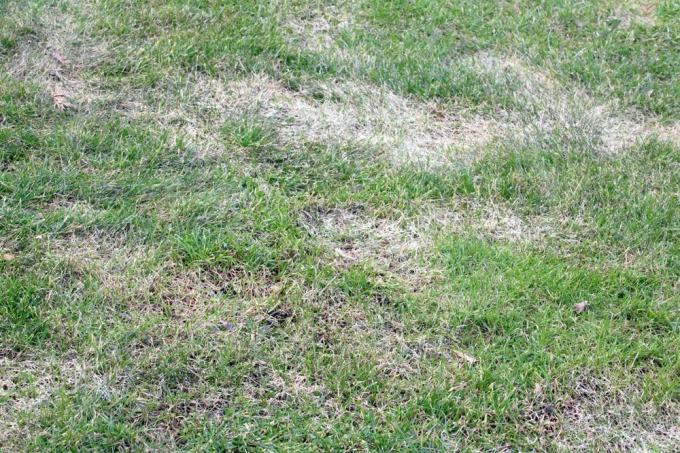
table of contents
- White grubs in the lawn
- Damage in the lawn
- Calcium cyanamide to combat
- use
- prevention
White grubs are larvae of beetles, which, depending on the species, are stubborn in the race hold and cause damage there. While some prefer dead root parts as food, there are special species that use turf roots as a source of food. As a rule, they do not go away voluntarily, but stay for years if they are not fought. Calcium cyanamide is often mentioned by hobby gardeners, but does it really help against grubs?
White grubs in the lawn
Only certain species are among the white grubs that like to hack turf roots over the long term:
- Cockchafer (Melolontha)
The cockchafer like to lay their eggs in the lawn. Once the larvae have developed from it, they feed mainly on juicy grass roots from around the age of two and cause damage for around two more years.
- Curl beetle (Amphimallon solstitiale)
Adult fallow beetles, also known as June beetles, are particularly evident on warm June / July evenings on the lawn. At two years, the generation time is shorter than that of the cockchafer.
- Garden beetle (Phyllopertha horticola)
The garden leaf beetle is also often referred to as the June beetle. From May to the end of June they fly over lawns and lay between 30 and 40 eggs in the ground, from which the first grubs hatch after about three weeks. Their generation time is one year.
Damage in the lawn
Anyone who does not see / recognize grubs or adult beetles can identify an infestation on certain damage in lawns and, if necessary, deduce a need to combat. The typical damage pattern in the case of a strong grub infestation looks like this:
- Completely eroded grass
- Loose blades of grass that can be pulled out almost completely with your hands
- Brown staining
- Large-scale death of the lawn

Calcium cyanamide to combat
Experienced hobby gardeners and lovers of healthy, lush green and healthy lawns swear by calcium cyanamide.
In fact, it has been proven to be an effective control agent against white grubs on lawns for many years. It is composed as follows:
- Around 50 percent lime
- One fifth calcium cyanamide (CaCN2)
- The rest is nitrate
- effect
Calcium cyanamide is particularly important for the effect. It has a herbicidal effect that is actually used against various weeds such as moss. But it is also poisonous for white grubs pests, so that they reliably die after fertilization with calcium cyanamide. Other positive side effects are:
- Curbs the spread of pathogens
- Prevents root rot
- Suitable for combating other pests in / under lawns
- Drive away snails
- Has a sterilizing effect
- Promotes humus formation and nutrient absorption in the lawn
NOTE: Lime increases the pH of the soil, which is beneficial for healthy growth when it is too low, but can be harmful when it rises above 6.5. It should therefore not be administered often and ideally only after a pH value measurement.
use
When handling calcium cyanamide to control white grubs, some safety precautions must be observed and an ideal dosage must be selected. Correct use also helps to achieve maximum effectiveness against the pests.
Protective measures

- Work only with rubber gloves
- Do not let it come into contact with mucous membranes (especially eyes)
- Keep children and pets away from the treated lawn for at least two weeks or alternative home remedies choose (it must have rained heavily or has been blown up at least once)
Apply calcium cyanamide
- Ideal: mix with a little compost (the warmth promotes it being absorbed into the soil)
- Soil should be moist
- Dosage: around 20 to 25 grams per square meter (one tablespoon corresponds to around 20 grams)
- Apply to the entire lawn, even in healthy-looking areas, to reach all grubs
- Spread with your hand forward and at a slight angle
- Pay attention to even distribution
TIP: If the compost is not mixed, a fertilizer spreader can also be used. This allows the amount to be applied more evenly and many garden owners find it more convenient.
prevention
Prevention is the best measure so that after a successful fight against grubs they do not reappear in the long term. The following can be done by lawn owners to combat a new pest infestation:
- No night lighting of the lawn area - light attracts the beetles and encourages egg-laying
- Surround the lawn with deeply buried curb stones so that no beetles burrow through the soil under the lawn from outside
- When preparing the ground for the lawn, work in close-meshed root protection grids or wire inlays
- Remove weeds quickly so that they do not provide an additional source of food
- Regular scarifying / manual soil loosening deprives grubs of their livelihood / optimal living conditions
